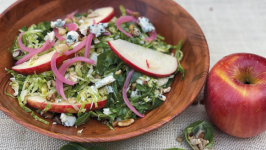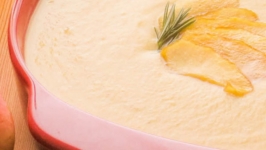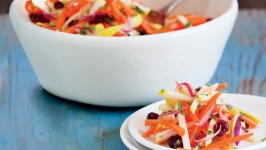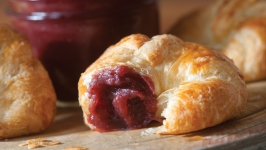Ingredients
- 1 gal (3.8 L) Apple juice
- 1 Campden tablet, if needed
- 1⁄2 pkg English ale or cider yeast
- 1 ⁄2 tsp Pectic enzyme powder
- Pkg Yeast nutrient, with instructions
- 1 ⁄2 to 1 tsp Powered acid blend, if needed
- 1 ⁄8 to 1 ⁄2 tsp Powdered wine tannin, if needed
- 3 Tbsp (25 g) Corn sugar, for bottling
- 1 ⁄4 c (60ml) Hot water, for bottling
Instructions
Basic Apple Cider
1. Pour the juice into a sanitized fermentation bucket. Check and record the original gravity. (If using unpasteurized juice, crush the Campden tablet[s] and whisk into the juice; snap on the lid, insert an air lock filled with sanitizer or vodka, and let the juice stand for 24 hours.)
2. Sprinkle the yeast, pectic enzyme, and yeast nutrient over the juice. Whisk vigorously with a sanitized whisk to dissolve the ingredients and aerate the juice. Snap on the lid and insert a filled air lock. Place the bucket out of direct sunlight and at room temperature (70° to 75ºF). Fermentation should begin within 24 hours (bubbles will pop regularly through the air lock). Active fermentation will peak after a few days, then gradually finish within 1 to 2 weeks.
3. Once you’ve seen very little activity in the air lock for a few days (a stray bubble or two is fine), siphon the cider to a sanitized jug or carboy, leaving behind as much sediment as possible. As you transfer the cider, taste it using a sanitized wine thief to check its progress. Insert the stopper and air lock, then place the cider out of direct sunlight and at room temperature for another 2 weeks or up to 2 months.
4. When ready to bottle, taste the cider again. If needed, add acid blend for more acidity or tannin for more astringency. Taste again a few days later, and continue adjusting and tasting until you’re happy.
5. Check the final gravity and calculate the ABV. Dissolve the corn sugar in the hot water and mix with the cider, back-sweetening if desired (see page 52). Bottle the cider. Wait 2 weeks before drinking or store for up to a year. Serve chilled.
About this recipe
Reprinted with permission from Modern Cider copyright 2017 by Emma Christensen. Published by Ten Speed Press, an imprint of Penguin Random House LLC.
Photographs copyright 2017 by Kelly Puleio






